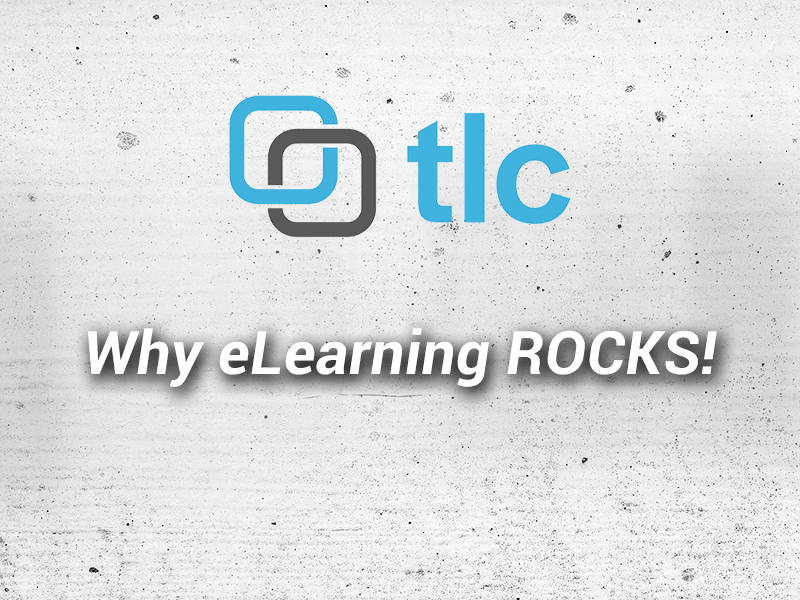
Controlling Captivate – Disable Scrubber
March 8, 2014
Controlling Captivate – Pause IT!
April 14, 2014There is no doubt that the educational landscape has changed dramatically over the past decade. The web provides all of the resources necessary to teach, to learn, to assess, and to reach an extremely wide audience. While listing the benefits of eLearning would take hours, let’s highlight a few reasons why technology-based education is the wave of the future. In this blog, we’ll focus on the 5 C’s: Convenience, Consistency, Cost, Challenge, and Community:
 Convenience – With materials, courses, tutorials and more available 24/7, users can access on-demand training and education to fit their individual schedules and needs.
Convenience – With materials, courses, tutorials and more available 24/7, users can access on-demand training and education to fit their individual schedules and needs.
With an internet connection and a web-accessible device, you have everything necessary to receive the information you need….when you need it.
In addition, some universities like Princeton, Stanford, and MIT offer free video lectures, and Massive Open Online Courses (MOOCs) from startups like Coursera, giving the world unprecedented access to what was formerly only available to the lucky few attending such higher-learning institutions.
Forgoing the need to live near the educational “hub” is another huge benefit to some as well. Without geographic considerations, time and resources can be spent concentrating on learning as opposed to financing the logistics of education. Although, some of the online offerings can be just as costly, if not more so, than traditional campuses, some are predicting that these costs will lower in the future as online degree programs achieve more acceptance.
 Consistency – With online education, you can rest assured users are receiving a uniform message transforming ambiguity to certainty in realizing key learning outcomes. This can be especially important for corporations with employees in multiple locations. Delivery time can also be compressed most of the time.
Consistency – With online education, you can rest assured users are receiving a uniform message transforming ambiguity to certainty in realizing key learning outcomes. This can be especially important for corporations with employees in multiple locations. Delivery time can also be compressed most of the time.
In addition, revisions to information and course materials do not involve large expenditures for reprinting and redistributing making this method more cost effective.
 Cost-Effective/Return on Investment (ROI) – eLearning provides a cost-effective alternative to traditional learning; however, it is time consuming to create learning content whether it’s online or not. Because you can distribute to a wider audience increasing your throughput and offer the courses 24/7, you can see your ROI quickly. Every time a user accesses a course your ROI starts increasing. Just divide the costs for production by the number of uses and you start realizing a return immediately. You also have cost savings by decreasing travel, material production and distribution costs. This makes online education an attractive option, not only to students, but to employers as well.
Cost-Effective/Return on Investment (ROI) – eLearning provides a cost-effective alternative to traditional learning; however, it is time consuming to create learning content whether it’s online or not. Because you can distribute to a wider audience increasing your throughput and offer the courses 24/7, you can see your ROI quickly. Every time a user accesses a course your ROI starts increasing. Just divide the costs for production by the number of uses and you start realizing a return immediately. You also have cost savings by decreasing travel, material production and distribution costs. This makes online education an attractive option, not only to students, but to employers as well.
 Challenge – eLearning is not for a specific type of student, but rather encompasses a broad range of services, from educational to corporate training. With eLearning, you can create intuitive, targeted, and user-friendly materials and programs. Advancements in behavioral sciences are also a major boon to eLearning, bringing extremely effective methods such as “gamification” to the mix, giving users added incentive to learn through systems of rewards, engagement, and progression.
Challenge – eLearning is not for a specific type of student, but rather encompasses a broad range of services, from educational to corporate training. With eLearning, you can create intuitive, targeted, and user-friendly materials and programs. Advancements in behavioral sciences are also a major boon to eLearning, bringing extremely effective methods such as “gamification” to the mix, giving users added incentive to learn through systems of rewards, engagement, and progression.
 Community – Worried about removing instructor/student/classroom interactivity? Don’t be. By providing a blended learning environment for students, you’re introducing a sense of community in your courses.
Community – Worried about removing instructor/student/classroom interactivity? Don’t be. By providing a blended learning environment for students, you’re introducing a sense of community in your courses.
You can easily allow users to access external reading materials and other resources, share ideas and issues within a community of students, encourage discussions, group activities, instructor interaction, and so much more.
Please let us know if you like this post by clicking the Like button below and feel free to Share. You can also click below to sign up for access to our FREE resources!





2 Comments
I enjoyed reading your article. I wish I knew where I can take a class to learn more about e learning and technology classes. I’m in Michigan, please let know if you know of any college that offer these classes.
I’m glad you enjoyed the article! Most colleges offer courses that will teach you how to use some of the software tools that are widely used in the eLearning industry. In addition, there are a lot of free tutorials and YouTube videos that address how to use eLearning development tools such as Adobe Captivate, Articulate Storyline, and others. You might also look into a Masters in Instructional Design if you’re considering this as a career field. You have a lot of options for these programs both online and in a traditional classroom setting.
We are going to be offering a coaching program for new eLearning instructional designers very soon. This program may be of interest to you and help you learn more about eLearning design. If you’d like more information, please feel free to sign up on our site and you’ll be notified as soon as more details become available and you’ll have access to other free resources we offer. In addition, you can also schedule a free consultation with us if there is anything we can help you with. Feel free to give us a call at 937.291.3888 or 855.399.4581 (toll free).